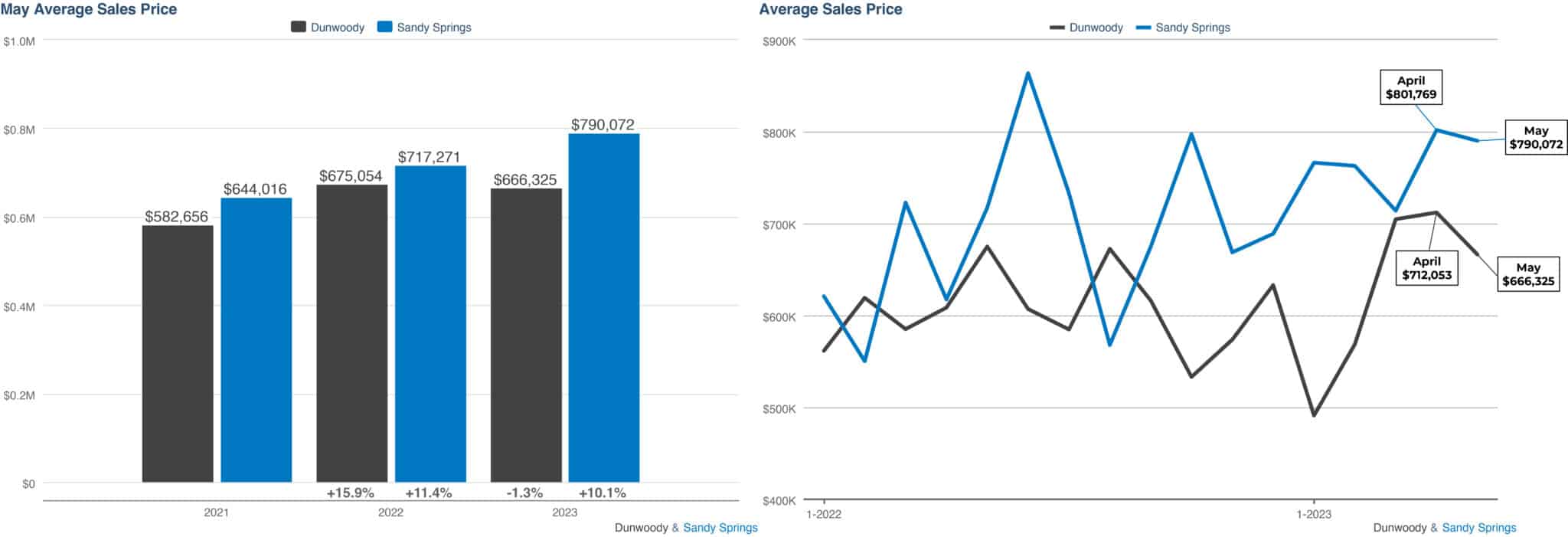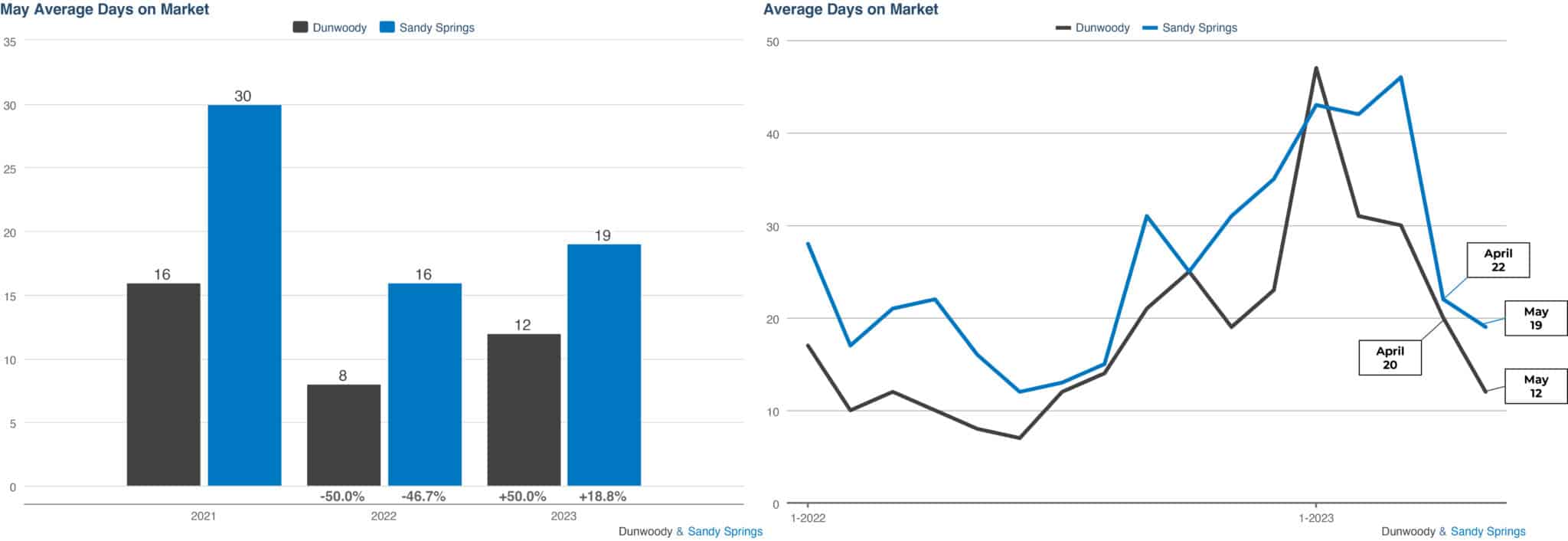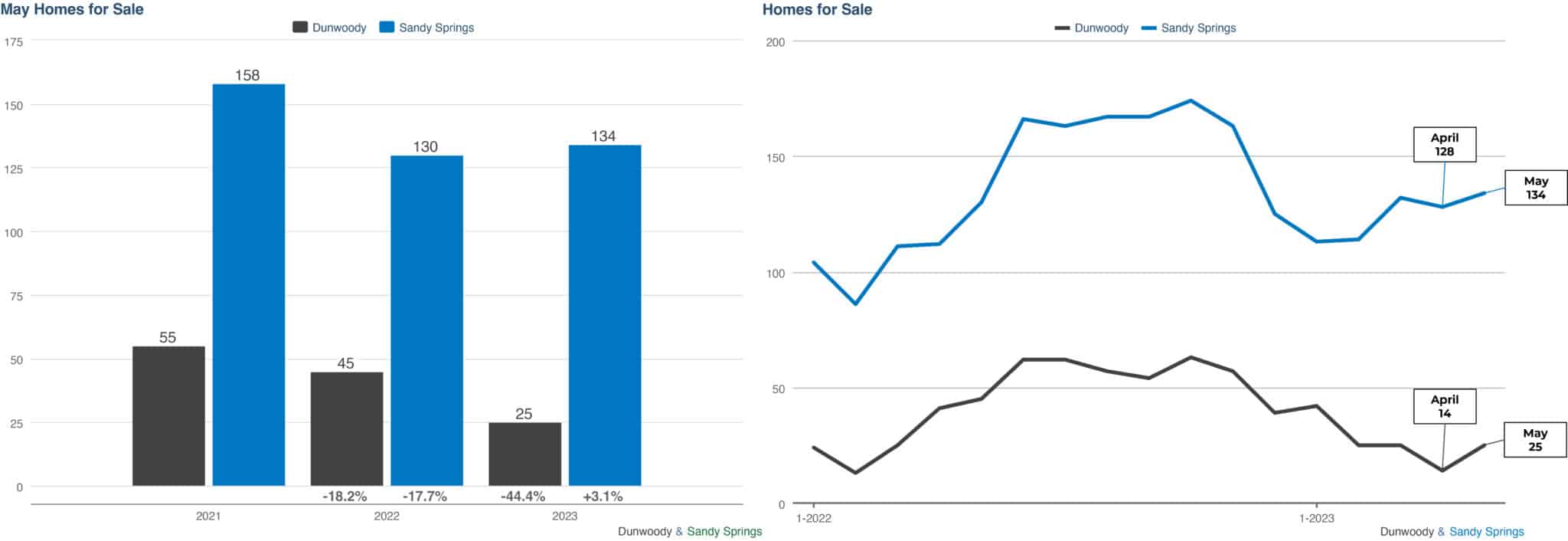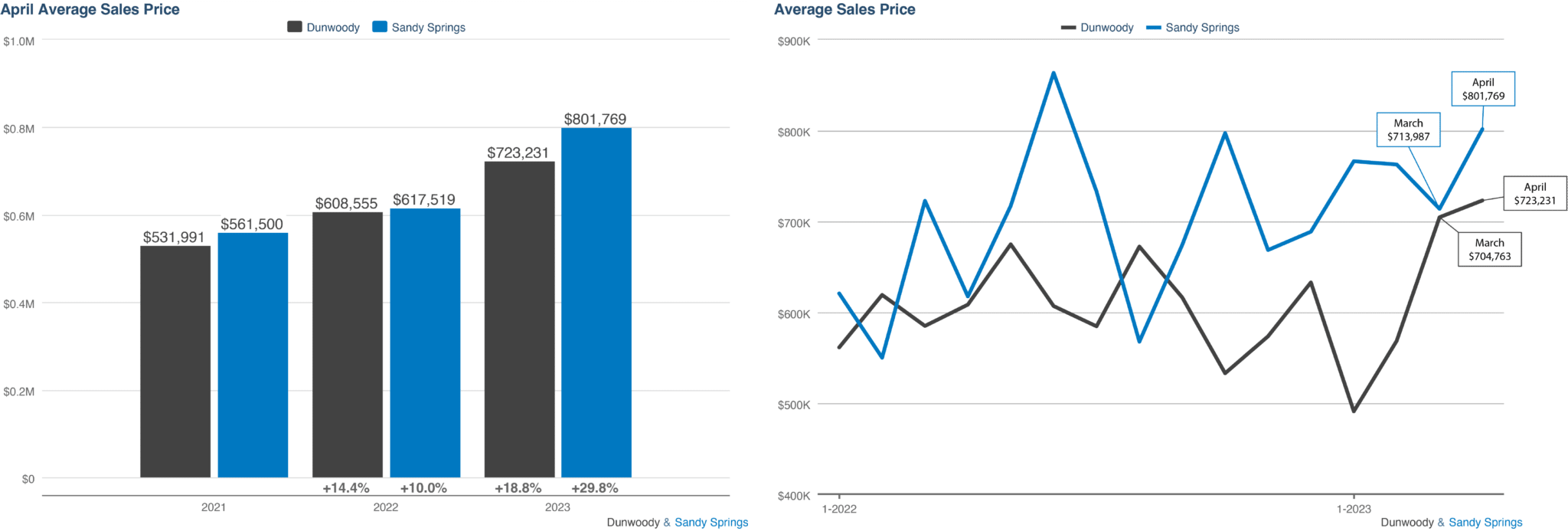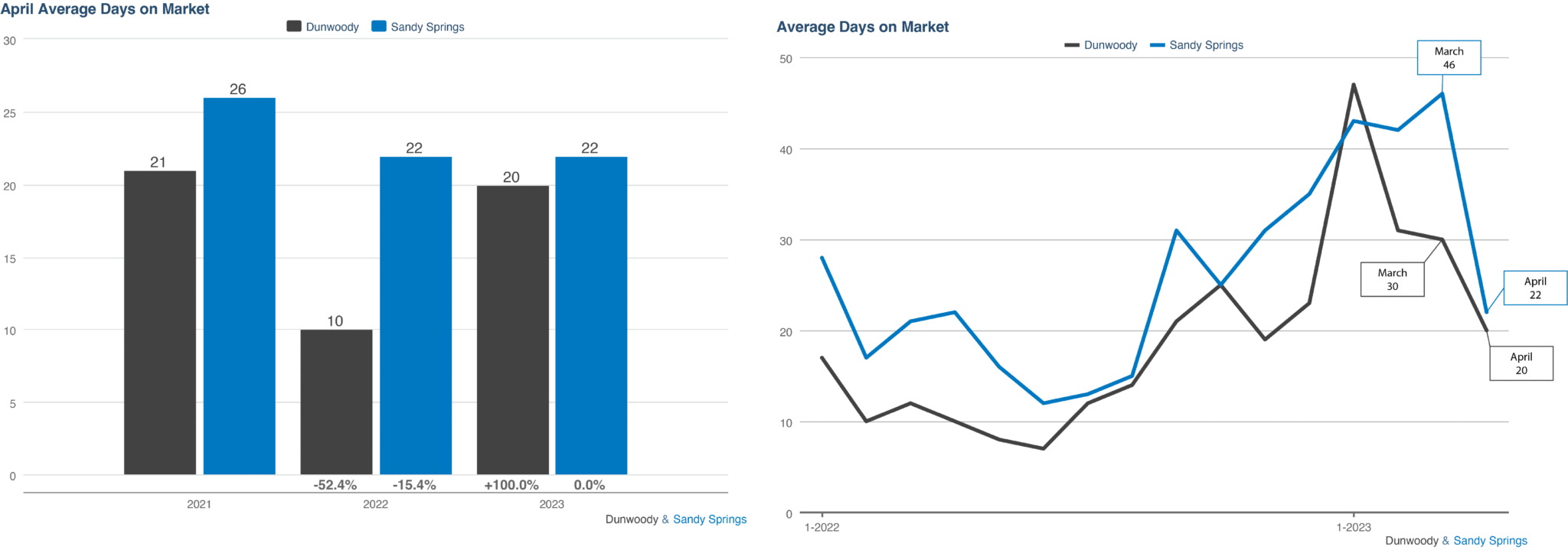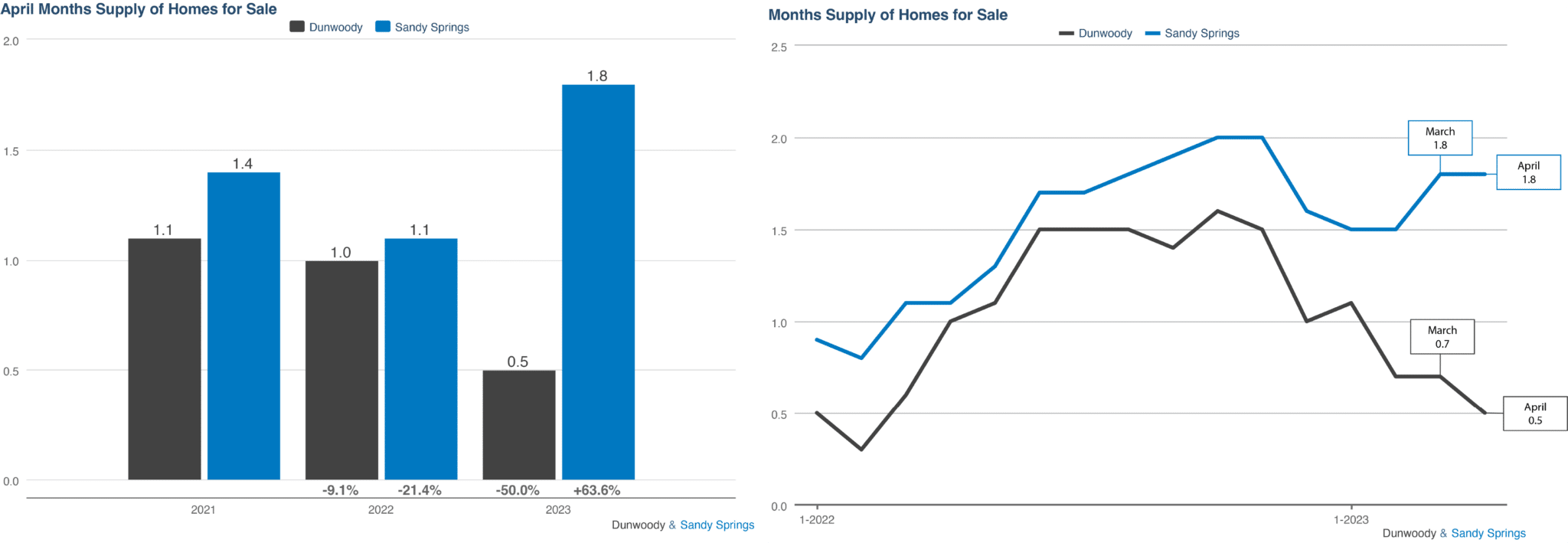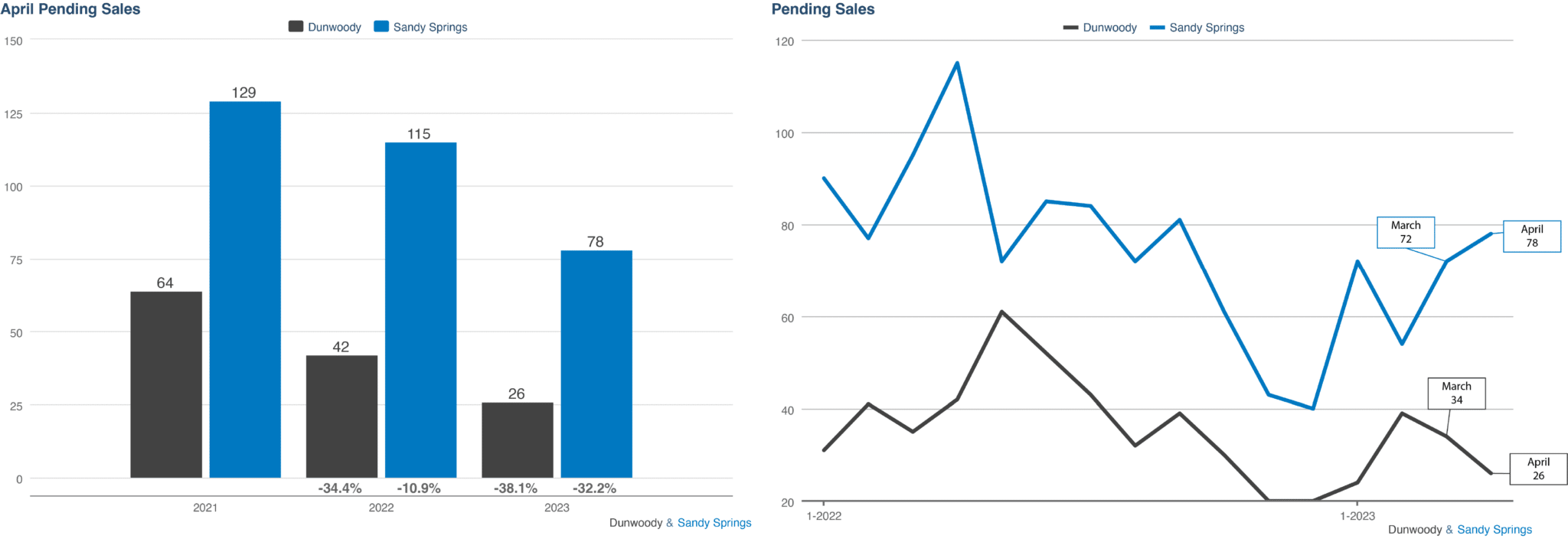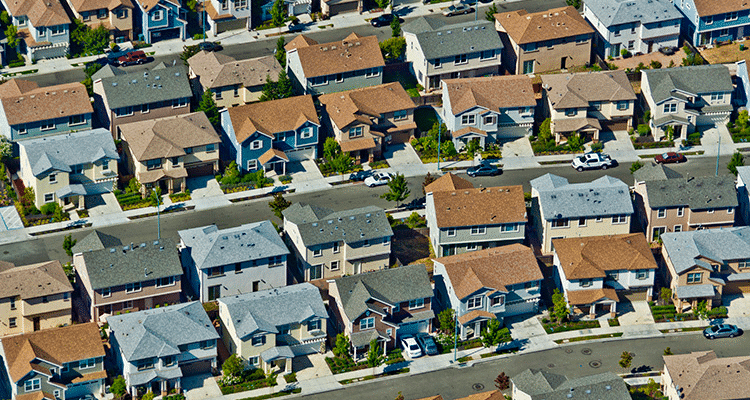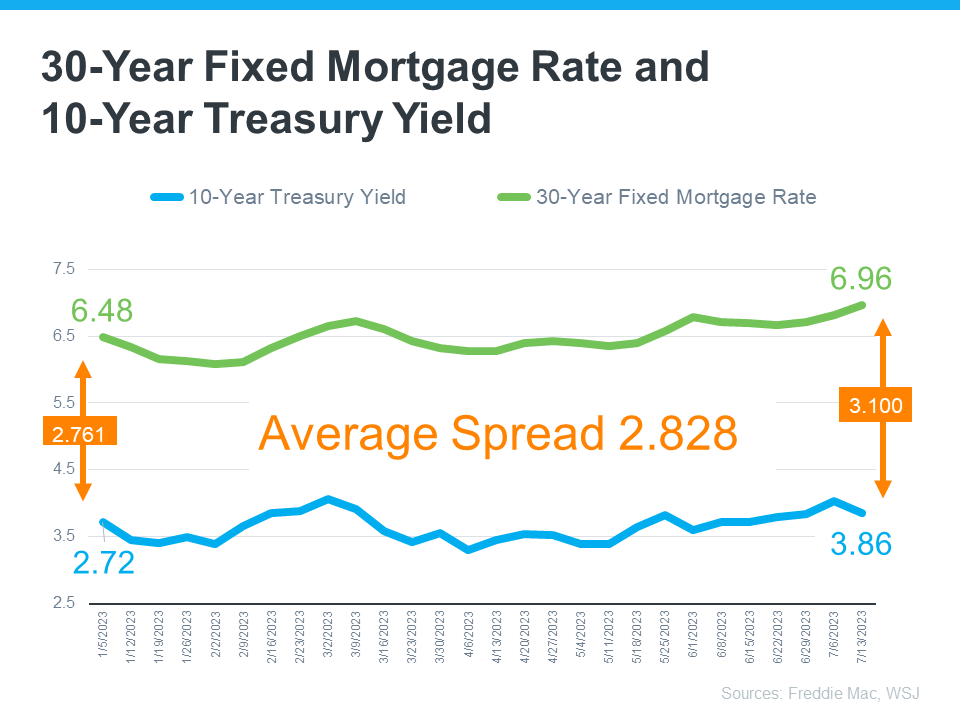In May, the real estate market in Dunwoody, Sandy Springs, and the surrounding areas maintained its robust demand. Similar to the nationwide trend, there was a slight increase in supply compared to previous months. However, this increment was insufficient to counterbalance the persistently strong seller’s market, as the supply levels remain at only half of what they were in 2019.
Key Points
– Both Sandy Springs and Dunwoody experienced a minuscule decrease in the average sales price, which correlated with a small increase in supply.
– The average days on the market in both Dunwoody and Sandy Springs witnessed a sizable reduction, extending the trend observed in April.
Average Sales Price
In May 2023, the average sales price in both Dunwoody and Sandy Springs saw almost no change. Sandy Springs remained stable at $790,072, indicating a minimal 1.5% change compared to April and a slight 10.1% rise from May 2022. Likewise, in Dunwoody, the average sales price slightly declined to $666,325, representing a decrease of 6.42%. When compared to the corresponding period last year, the average price in Dunwoody exhibited a minor 1.3% change, indicating a similarity.
Average Days on Market
In May, both Dunwoody and Sandy Springs experienced a significant decline in the average days on the market, which had already been observed in April. Dunwoody witnessed a remarkable drop of over 40% to just 12 days. Nevertheless, it’s important to highlight that this represents an increase compared to the same period last year when the average days on the market were only 8 days. Similarly, Sandy Springs observed a decrease in the average days on the market from 22 to 19 days. It’s worth noting that during the corresponding period last May, the days on the market in Sandy Springs stood at 16 days.
Months Supply of Homes for Sale
Sandy Springs saw the smallest increase in months supply from 1.9 in April to 2.0 in May. Meanwhile, Dunwoody saw a jump from 0.4 to 0.8 in months supply, reflecting a 100% increase compared to April but a 27.3% decrease from May 2022.
Homes for Sale
In May, both Dunwoody and Sandy Springs observed a modest rise in the number of new homes available for sale. Dunwoody witnessed a slight increase from 14 homes in April to 25 homes in May, indicating a 44.4% decrease compared to May 2022 when there were 45 homes available. Similarly, Sandy Springs experienced a marginal increase from 128 homes in April to 134 homes for sale, representing a mere 3% increase compared to the previous year.
Pending Sales
In May, the number of pending sales in Sandy Springs continued to rise, reaching 81 compared to 72 in April. On the other hand, Dunwoody maintained a steady number of 30 pending sales, showing no change. When compared to May 2022, Sandy Springs observed a 12.5% increase in pending sales, as it had a total of 72 pending sales during that period. In contrast, Dunwoody experienced a significant 50% decrease from May 2022 when there were 61 pending sales.
Key Takeaway
In summary, despite the slight increase in market supply in Dunwoody and Sandy Springs, it is important to note that the seller’s market remains robust. The current market dynamics are still heavily influenced by the supply of homes. For those considering selling their homes during this opportune time, it’s crucial to adopt the right pricing and strategic approach. By partnering with our team, you can navigate the market effectively and maximize your chances of securing top dollar for your property. Take action today and reach out to our team to learn more about the market trends and how our expertise can help you achieve your real estate goals.
*All data from First Multiple Listing Service. InfoSparks© 2023 ShowingTime.

